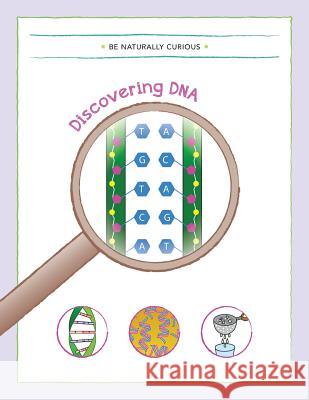Discovering DNA » książka
Discovering DNA
ISBN-13: 9781942403036 / Angielski / Miękka / 2015 / 34 str.
What is DNA and how does it work? Designed for grades K-5 and to be done at home or with small groups, this richly illustrated interactive multi-activity mini-course uses nontraditional teaching techniques to introduce children to the fascinating and important topic of the DNA double helix and where it is found in their bodies. The mini-course includes an illustrated story-based lesson as well as games, activities, and projects that appeal to all types of learners. In this mini-course, children learn how to build a DNA molecule with paper puzzle pieces (included in the mini-course). They then reinforce and expand this knowledge by creating a three-dimensional DNA model with easy-to-find materials. Children go on to gain a fundamental understanding of how bases pair together within a DNA helix through a movement-based game with other kids or stuffed animals. Finally, children learn to isolate DNA from fruit or vegetables through safe experiments they can conduct in their own kitchen. Most materials needed to complete the mini-course can be cut from the book itself (or, if preferred, downloaded and printed using an included link). The mini-course requires only a few common household items to complete the activities: two thick pieces of licorice, toothpicks, four different types of fruit or soft candy, blender or sealable plastic baggie, one half cup of fruit or vegetable (fresh or frozen strawberries, peas, spinach, broccoli, or banana), measuring spoons, table salt, water, liquid dish detergent, clear plastic or glass cups, coffee filter or small strainer, ice-cold rubbing alcohol, Popsicle stick or plastic coffee stirrer, scissors, two pieces of yarn or string (each about 5 feet long), tape, and nine friends or stuffed animals. Upon completing the mini-course, children will be provided with links to additional online resources and will earn new concept badges for their Science Tool Kit (included in the mini-course)-including double helix, DNA unit, base pairing, and DNA extraction."











